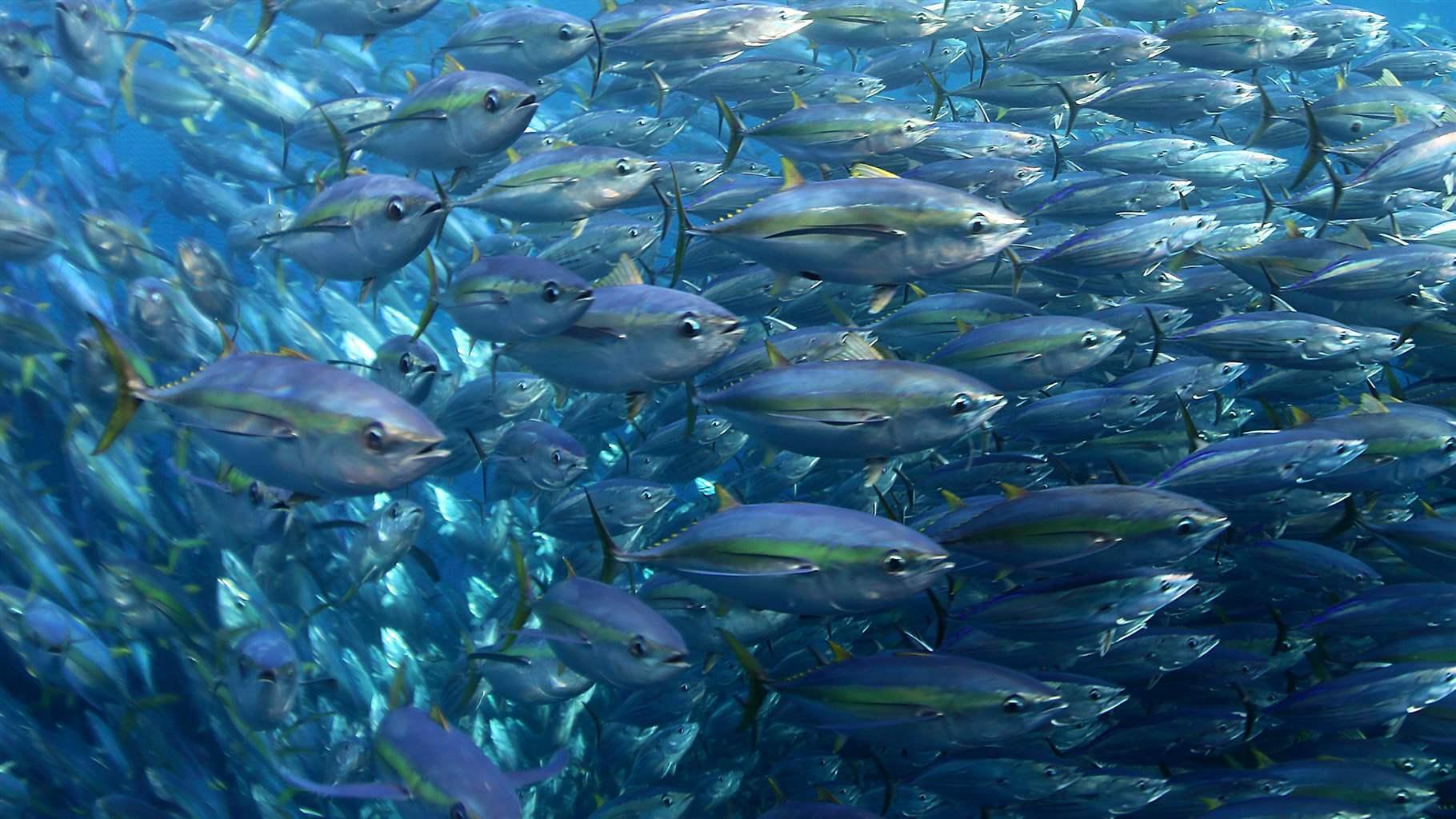
Tuna swim in a purse seine net. The expansion of two large marine protected areas in the Pacific Ocean led to increases in catch and revenue of bigeye and yellowfin tuna for the Hawaii longline tuna fleet, a new analysis shows. Fabien Forget ISSF
Expanded Marine Protections Benefited Hawaii Tuna Fishery, Study Shows
Major fleet’s catch and revenue rose after enlargement of two marine monuments
From Pew Trust, May 12, 2021
Contradicting concerns from longline commercial fishing operators in the Pacific region, tuna industry revenue actually increased following the expansion of two large U.S. marine protected areas (MPAs) in the Pacific Ocean, a new analysis shows. The work builds upon a study published in the journal Nature Communications last year, which is one of only a few studies to apply rigorous scientific methods to this issue.
In the original study, the authors looked at longline commercial fishing by the Hawaii fleet around two of the largest protected areas on earth: The Pacific Remote Islands Marine National Monument (PRI), south and east of Hawaii, which was expanded in 2014, and the Papahānaumokuākea Marine National Monument (PMNM) in the northwestern Hawaiian Islands, which was enlarged in 2016. The expansions quadrupled the size of each of these MPAs, which together prohibit commercial fishing and oil and gas exploration across more than 2.7 million square kilometers (about 1.1 million square miles) of ocean.
Prior to the enlargement of both PRI and PMNM, the fishing industry warned that expanding the MPAs would reduce catch and increase travel costs for fishermen, resulting in the loss of tens of millions of dollars and driving seafood prices higher at Hawaiian retail markets. The original study assessed “catch per unit effort”—which measures the number of fish caught as a factor of the effort and cost expended to catch them—as a proxy for profitability. It found no net impact on profitability following the PMNM expansion and increased profitability following the PRI expansion.
In response to a comment by National Oceanic and Atmospheric Administration researcher Jonathan R. Sweeney, the study’s authors reanalyzed their approach using a more robust outcome measure—revenue per unit effort. The revised analysis weighted species by their economic value, rather than by the number of fish caught for all species, allowing the researchers to capture the market value of the two most commercially important species that are the focus of the fishery. Although one of them—yellowfin tuna—had the fourth-largest catch, it was second only to bigeye tuna in revenue. The updated analysis found that fishing profitability increased for these two species following both expansions.
The data shows that revenue per unit effort generally increased since the expansions began in 2014 and further increased for the 16 months following the Papahānaumokuākea monument expansion. “It now appears that the Papahānaumokuākea expansion actually benefited” Hawaii’s tuna fishery, the researchers explained.

The reanalysis provides compelling data contradicting previous findings that revenue per unit effort declined following the expansion of the PMNM. In addition, the new findings reinforce the important role that MPAs can play in both protecting biodiversity and providing economic benefits to nearby fisheries.
---30---
Matt Rand is a senior director and Rebecca Jablonski-Diehl is an associate manager working on The Pew Charitable Trusts’ marine habitat conservation efforts.